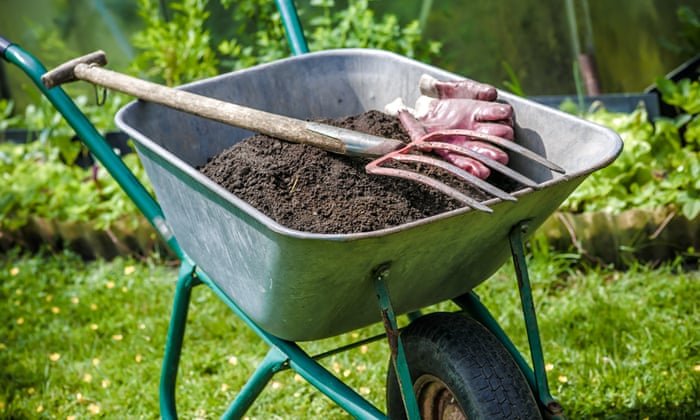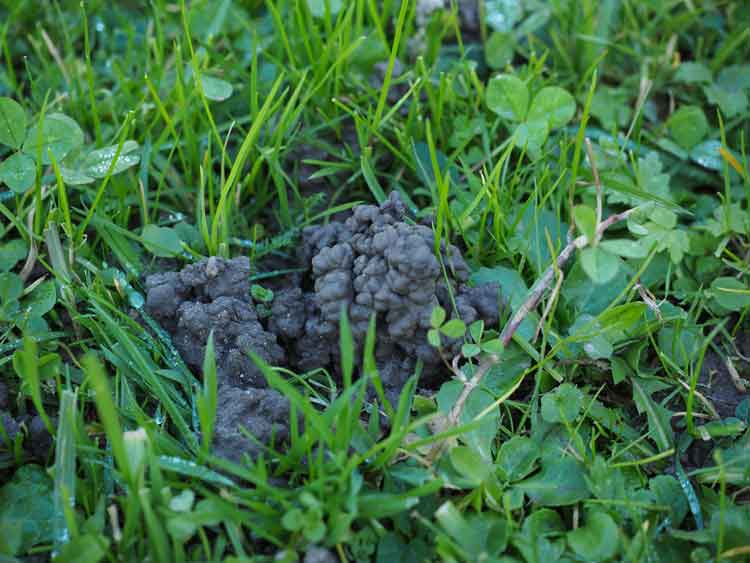
Whether in the vegetable or ornamental garden, it is important to have loose soil in which to grow the plants . In such soil, the roots penetrate easily to take up the nutrients and water necessary for their growth. Conversely, a hard, compacted, impermeable soil will undoubtedly lead to poor and cramped growth of the plants, or even to root asphyxiation in the event of prolonged rainy periods. We know that the roots primarily explore loose soil, they are able to circumvent hard clods. If loosening the soil is essential for optimal plant growth, should it be turned over?
To return or not to return the earth, a question of generation…
Even today, in the city or in the countryside, we can see vegetable gardens conducted on the cultural model resulting from the post-war period. The two key words: productivity and cleanliness ! Cleanliness by hunting weeds, aligning vegetables and French-style alleys. Productivity through the use of manures and mineral fertilizers. In this type of garden, the soil is prepared with a tiller or, if its size allows, with a spade. The earth, considered as a simple support for crops, is thus turned over, the fauna is ignored. It should be noted, however, that the use of manure enriched the land with humus.
Soil life, often overlooked
However, the earth is alive, it is much more than a simple growing medium and it contains many organisms.
The visible soil fauna consists of hundreds of species of insects, mites, crustaceans (woodlice) and earthworms. It can be assessed at three levels:
The endogeic fauna, which lives in the first centimeters of the ground, contains in particular medium-sized worms, they dig horizontal galleries and feed, among other things, on dead roots.
The epigeal fauna, which lives on the surface, in the litter of plant debris, includes red worms and many other animals such as springtails, woodlice, owls, nematodes, etc.
The anecic fauna , composed of large earthworms, and which represents 80% of the weight of worms, make long vertical and permanent galleries. They rise to the surface to eat the organic matter and redistribute it, digested, in the form of castings, on the surface and throughout the profile of their gallery.

The effects of digging with turning
When the earth is turned over, the habitat, galleries of animals and earthworms are partially or partially destroyed. The epigeal fauna is simply destroyed and buried, the worm galleries of the endogenous fauna are destroyed. As for anecic earthworms, their gallery extending below the plowing zone, their gallery is cut in two and no longer allows access to the surface of the soil but up to, what is called in agriculture, the “plowing sole”. Anecic and endogeic earthworms will take 2 to 5 years to rebuild their habitat after plowing , so by turning the earth every year, they are given no chance to reform their galleries.
Let’s go back to the surface of the ground, and let’s look at the non-visible organisms: the micro-organisms. The surface layer of the earth is the richest in humus, it is the seat of intense biological activity. Regarding micro-organisms, a single gram of ordinary humus contains millions of bacteria, yeasts, algae and fungi. The needs of these micro-organisms are very specific, for example algae need light, aerobic bacteria need a sufficient level of oxygen. When the earth is turned over, these micro-organisms, deprived of their specific needs, die and disappear.
Let’s also look at the work of digging itself: Turning with a spade is tiring, painful and bad for the back. Turning the tiller is costly in terms of equipment and fuel. Turned earth also favors the systematic regrowth of weeds and requires more watering, hoeing and weeding because the structure of the earth becomes unstable and a simple rain can lead to a slaking crust on the surface. The water runs off and no longer penetrates the earth. At the agricultural level this results in the leaching of nutrients and the pollution of waterways.

How to loosen without turning the soil?
As you have understood, turning over the earth is a harmful practice. However, to grow vegetables and plants, you need loose soil. And for that, you have to unpack it. Two methods are generally used:
- gardening with a permanent soil cover: mulch and mulch, cultivated plants, green manures, spontaneous vegetation, compost … (to read: “Mulch, why? How?” and “Green manures: why, how?” )
- loosen the soil physically, by decompacting it, only when necessary and with suitable tools such as the grelinette and the spade fork.
A permanent, natural ground cover is work that imitates nature. Look, in the forest, the leaves fall, they form a litter which gradually decomposes to feed the life of the soil! In the garden too, this practice will promote the life of the soil and its natural aeration by the fauna.
But before having naturally loose soil, you will have to wait a few months or even several years! Indeed, going overnight from a soil with little life to a very fertile and well loosened soil is utopian and also depends on the original nature of the soil. During the first years, it will be necessary to continue to loosen manually in depth but without turning the soil. In practice, in a small garden (within 10 m²) a simple spade fork is used. A larger vegetable garden requires a grelinette.
How to use the grelinette? The grelinette (as for the spade fork) is planted in the ground, then the handles are brought towards you in order to lift the ground, then they are brought back vertically (of course, we always work backwards, it would be all simply silly to walk on ground that has just been loosened!). The soil is thus simply loosened without being turned over. If necessary, the clods are then broken up using a hook and leveled before sowing or planting.
In conclusion: be lazy, outsource the tillage but feed your workers!
In summary, avoid turning the soil, trust the life of the soil by always making sure to provide it with food and thus promote its work and its natural loosening. It is the fauna that plows instead of the gardener. The gardener is simply there to accompany him, if necessary, tools can be used occasionally to loosen the soil such as the grelinette. Over the years, you will need it less and less.
